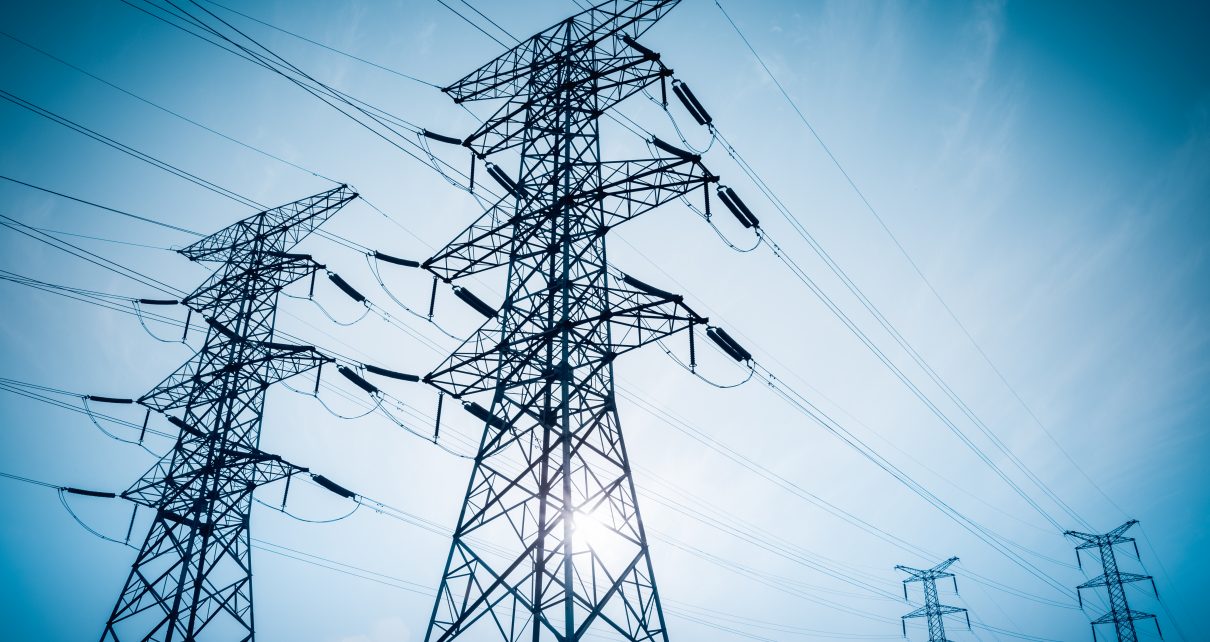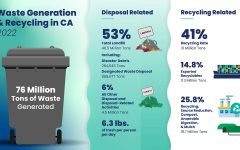
Electricity Transmission Pylon at Dusk. (Photo: chuyuss/Shutterstock)
Ringside: Californian Energy Use Compared to the USA and the World
It is generally true that the more energy a person can use, the more income they’ll have
By Edward Ring, November 29, 2024 3:00 am
As we celebrate one of America’s finest traditions this week, one of the things we are surely thankful for is the energy we often take for granted. We are particularly lucky in America, because the energy we use is nearly always reliable and abundant. Just how abundant? Here are some numbers.
Most energy economists report all forms of energy production and consumption in joules. A joule is one watt-second, i.e. 3.6 million joules equals one kilowatt-hour. For reporting per capita energy use per year, gigajoules (1 million joules) are used. When measuring very large amounts of energy use per year, such as for states and nations, exajoules are used. An exajoule is one billion gigajoules, or one quintillion joules. For comparison’s sake, note that one exajoule is the energy equivalent of 278,000 gigawatt-hours.
If you find this tedious and abstruse, relax. To quantify how thankful we should be that we live in America, it’s the proportions that matter.
Total global inputs of primary energy in 2023 – that’s the energy contained in all fuels; coal, gas, oil, nuclear, solar, wind, geothermal, and biomass – is estimated to have been 604 exajoules. The United States accounted for 96 exajoules (16 percent), and of that, California accounted for 7.1 exajoules (1.2 percent). But here’s where it gets interesting.
If you examine per capita energy use, stark contrasts emerge. People living in the United States had per capita energy consumption of 285 gigajoules in 2023, whereas people in the rest of the world had per capita energy consumption of 75.3 gigajoules. Talk about disproportionality. Americans consume more than four times as much energy per person as people in the rest of the world.
This simple distinction, the difference between total energy use and per capita energy use, is often lost on, for example, those who criticize the energy footprint of China. The reason China generates more pollution is because their annual inputs of primary energy are 153 exajoules, 67 percent greater than the U.S. But China’s per capita consumption of energy was only 133 gigajoules. Americans consume 2.5 times as much energy per person as someone living in China.
To fully appreciate the disproportionate gift of energy Americans enjoy, consider the continent of Africa. With a population of 1.5 billion, roughly equivalent to China’s population, they only consumed 20 exajoules of energy in 2023. This equates to per capita energy consumption of 13.3 gigajoules. The average American consumes more than 21 times as much energy as the average African.
It is generally true that the more energy a person can use, the more income they’ll have. So what is a realistic target for per capita energy use by, say, 2025, when the world population is estimated to begin leveling off at around 9.4 billion people? For everyone to consume as much energy as Americans consume, total primary inputs of energy worldwide would have to reach 2,689 exajoules, which is 4.5 times what we currently produce. Absent an extraordinary breakthrough in energy technology within the next 20 years, this is probably impossible. But what about California?
Maybe it’s merely attributable to our mild climate, or maybe it’s also thanks to the billions we’ve invested in energy efficiency, but Californians only have a per capita energy consumption of 192 gigajoules per year. This surprised me, but it checks out. Californians use 35 percent less energy per person than the average American in the other 49 states.
This is an encouraging fact. It means that if everyone on Earth consumed as much energy as the average Californian, global energy production would “only” have to increase to 1,810 exajoules per year, “only” three times current worldwide production. But the story doesn’t end here.
Primary energy inputs refer to raw fuel, whether its oil, natural gas, coal, nuclear, hydro, or renewables. All of these raw sources have to be turned into a practical, transportable fuel, then that fuel has to be turned into something useful – light, heating, cooling, communications, computing, mobility. At every step in these conversions, energy is lost. A natural gas power plant loses energy spinning a turbine to generate electricity; a gasoline engine loses energy turning combustion into actual horsepower.
Currently only about 40 percent of primary energy inputs are actually realized as useful energy. What if we could increase that to 80 percent? That’s an ambitious goal, but some applications already achieve this. An EV charged with photovoltaic generated electricity incurs losses in transmission, battery charging, battery discharging, and by the motor converting electricity into traction. But altogether, more than 80 percent of the original photovoltaic electricity makes it to the road in the form of horsepower.
So for the sake of argument, what if our energy economy was 80 percent efficient turning raw energy into useful energy, instead of only 40 percent efficient? Under that scenario, for everyone on Earth to enjoy the same per capita access to useful energy, worldwide primary energy inputs would only have to increase to 905 exajoules per year. That’s only 50 percent more than what we consumed in 2023, and we’ve got just over two decades to get there. This is within the range of feasibility.
We may be thankful that in America we have the best access to energy in the world today, and we may be thankful we live in California, the global epicenter of innovation. If anyone can figure out how to deliver affordable, sustainable, abundant energy to everyone in the world, it is us.
- Ringside: EVs and California’s Future Demand for Electricity - December 4, 2025
- Ringside: Politically Viable Water Supply Projects - November 27, 2025
- Ringside: Shifting Costs Does Not Solve California’s Electricity Shortages - November 20, 2025





You lost me at “To fully appreciate the disproportionate gift of energy Americans enjoy, consider the continent of Africa.”
By “energy” should I assume you refer to “electricity”? Electricity is not a “gift”, it’s a technology developed for humans, a technology that “create” more than enough electricity. And why not compare Los Angeles to the Mojave desert in electricity usage, instead of the US to Africa?
Nice article Ed. I’d note the low per capita consumption in California is due, in addition to the points you raise (climate and efficiency) our economy is changed considerably compared to the rest of the nation. We’re dominated now by services and mush less manufacturing…a typically energy intensive activity. Further, not all end uses require electricity (a high value energy) when direct use of the primary source will do. Why run electric water heaters (incurring the losses of converting fuel to electricity (typically ~50%) when burning, say, natural gas directly runs >95%?
“We may be thankful that in America we have the best access to energy in the world today” I am thankful we have energy but I not am thankful for the cost. Insisting on Solar and Wind over nuclear, gas, oil will never bring down the cost to the consumer. Forcing utilities to build solar and over conventional generation doubled my cost for electricity over a 10 year period. I have 3 less people living in my house and have invested in energy saving appliances and LED lighting. Increased cost for energy can be laid at the altar of Sacramento.
Nearly everything the author writes in this article is upside down, inside out and backwards.
While average Californians struggle to afford power just to survive, Gavin “Hair-gel Hitler” Newsom and the criminal Democrat mafia thugs that control this state have all the power they need for their gated and walled mansions in uber wealthy enclaves like Ross and Kentfield in Marin County where there are ZERO homeless shelters and no low income housing.
Electric cars are failing due to all the lies told to promote them. They are not a solution to anything. Manufacturers are facing extreme financial consequences for going all in on this idiocy.
The article states that energy use is a function of income, but then implies California’s low energy use is due to efficiency. What about that fact that California has one third of all of the welfare recipients in the country, and 25% of the homeless? What about that California has the second highest employment rate in the nation? People are broke in California.